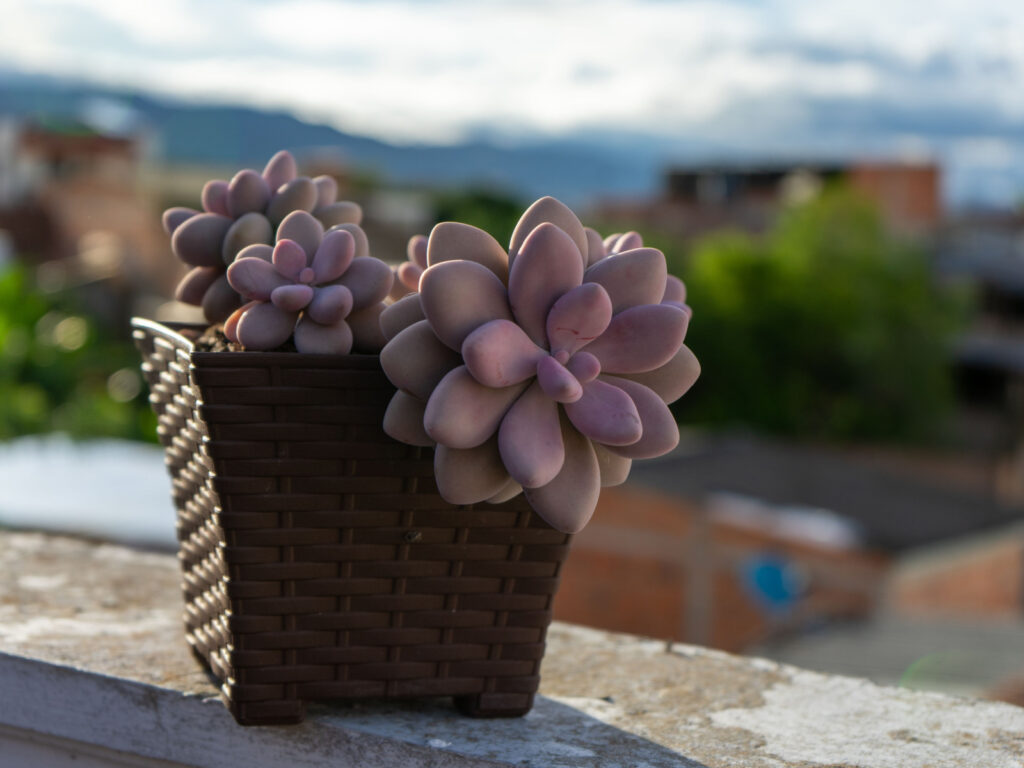Are you looking for a succulent that is going to look unique, no matter how many succulents you have in your garden? Check out the Moonstone Succulent, which has striking, chubby stems that come in a few different colors. The Moonstone Succulent’s features certainly make up for what it lacks in height!

0 of 30 secondsVolume 0%
MOONSTONE SUCCULENT CHARACTERISTICS
Moonstone Succulents have a number of features that you are going to find in few other succulents. A Moonstone Succulent will bring variety to any garden.
Check out some of the common characteristics of Moonstone Succulents:
- Moonstone Succulents have white stems with blue-green, blue-purple, or pink leaves
- Leaves on this succulent are chubby and thick and covered with white powder
- Succulents grow less than 4 inches tall but can spread more than 12 inches wide
- Moonstone Succulents may also be known as the Sugar Almond Plant thanks to its interesting shape
Moonstone Succulents also have flowers that appear over the winter – which is uncommon for numerous other varieties of succulents. Your flowers will:
- Bloom from winter to early spring
- Grow at the end of long stems
- Be bell-shaped
- Have reddish orange petals
WATER REQUIREMENTS
Moonstone Succulents have similar water requirements to other types of succulents that you may plant.
The best rule of thumb is to only water your Moonstone Succulent when the soil is dry to the touch. Under most conditions, you can assume that you will need to water your succulent once a week or so. In the winter, when growth slows down, you can cut your watering down to once every two weeks.
Avoid overwatering your Moonstone Succulent because overwatering can lead to root rot, which could kill your succulent. Well-draining soil will do wonders to prevent accidental overwatering and root rot. You can also plant your Moonstone Succulent in a terracotta pot instead of a plastic or glass pot.
One newly popular way to water succulents is to water deeply. The best way to do this may feel unnatural, but here are the steps:
- Close your sink drain and fill your sink with water
- Dunk your Moonstone Succulent in
- Allow your succulent and soil to soak up the water
- Give your succulent time to dry out and place it back to its home
LIGHT & TEMPERATURE REQUIREMENTS
Moonstone Succulents are native to Mexico, so Moonstone succulents do well in full sun. Your Moonstone Succulent will also grow just fine if it gets some shade during the hottest part of the day.
Above we mentioned that your Moonstone Succulent has a fine white powder on the leaves. This powder provides your succulent some level of sun protection because of the hot, dry native environment it is used to.
Since Moonstone Succulents love sun, these succulents are not frost hardy. Still, some sources state that the Moonstone Succulents can survive in temperatures as low as 20 degrees. Once temperatures dip below freezing, though, you run the risk of freezing your Moonstone Succulent.
If your Moonstone Succulent is inside, then you have an easier time dealing with temperature and light changes.
- Keep your succulent in a window with bright, indirect sunlight
- Move your succulent away from the window in cold winter months since cold can seep in through windows
ARE MOONSTONE SUCCULENTS RARE?
Moonstone Succulents are considered to be rare plants because of where they are found in the wild.
Moonstone Succulents are not overly difficult to find or propagate, so this is not the reason why I would consider Moonstone Succulents rare. If you want a Moonstone Succulent for your garden and don’t mind finding one through traditional methods, then you won’t have a problem finding a Moonstone Succulent.
Rather, Moonstone Succulents are not abundant in the wild, so they are nearly impossible to find outside of nurseries or people who propagate succulents. This is why I would argue that Moonstone Succulents are rare.
According to one website, you will only find moonstone succulent in a single location in San Luis Potosi. You’ll need to climb nearly 4,000 feet up on a rock cliff in order to find this plant in its native environment.
HOW BIG CAN MOONSTONE SUCCULENTS GET?
Moonstones are not known for their size, but this succulent does spread widely.
As mentioned earlier, your Moonstone Succulent will not grow tall. At the tallest estimate, your succulent will be 6-8 inches tall.
Moonstone Succulents can, however, spread or trail. This is the more substantial growth that you will see from this succulent. Putting your Moonstone Succulent in a hanging pot will allow its stems to grow down the edges of the pot and hang beautifully.
The rosettes on your succulent will also be small, though compared to the height of the plant, may appear larger. Most Moonstone Succulent rosettes will be about 4 inches wide.
CAN YOU PROPAGATE MOONSTONE SUCCULENTS FROM A LEAF?
Some succulents can be propagated from a leaf, but you will have the best luck propagating your Moonstone Succulent with a stem.
Fallen or removed leaves could indeed propagate a new flower, but you’ll want to leave these leaves alone.
Instead, use a sharp, clean pair of scissors to remove part of your Moonstone Succulent. Since Moonstone Succulents spread wide, you will likely not notice that you have removed a portion of your plant.
Allow your stem to dry for a few days before planting it in well-draining soil. Succulents grow slowly, so it may take a few weeks for you to see any new growth on your Moonstone Succulent propagation.
If you’re committed to growing a Moonstone Succulent from a leaf, you can try this method as well. Simply twist the leaf off of the succulent. Make sure that you get the entire leaf; if it breaks in half, you will have a lower chance of propagating your Moonstone Succulent.
Like with a stem cutting, allow your leaf to dry out for a few days before planting.